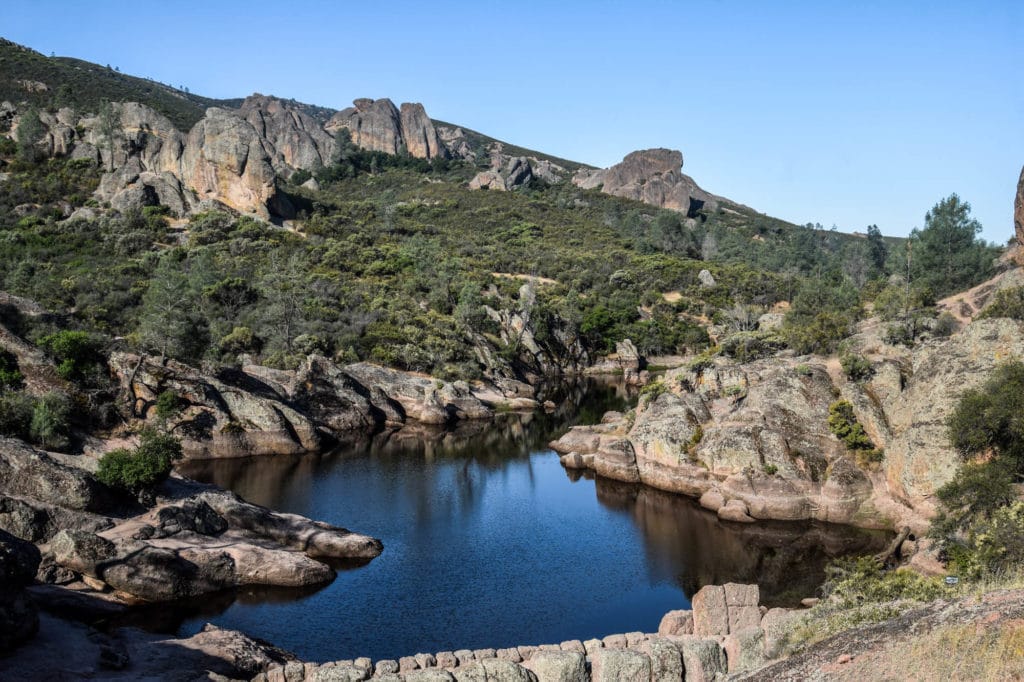
5 Things Not to Miss on Your First Visit to Pinnacles National Park
- Jennifer Melroy
- Last Modified September 14, 2022
- First Published on June 15, 2020
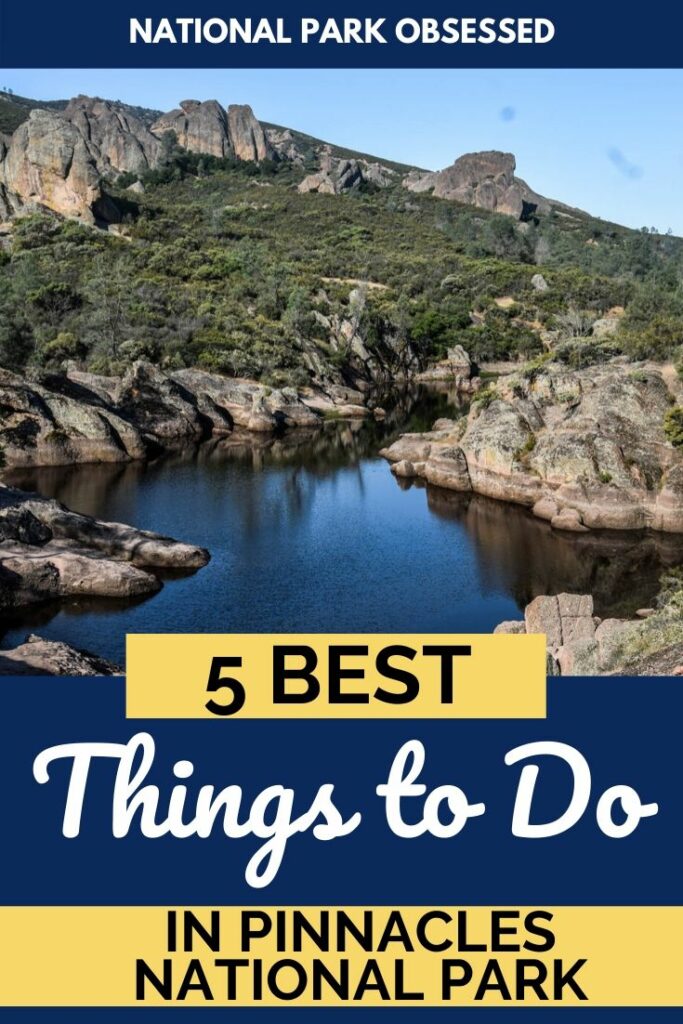
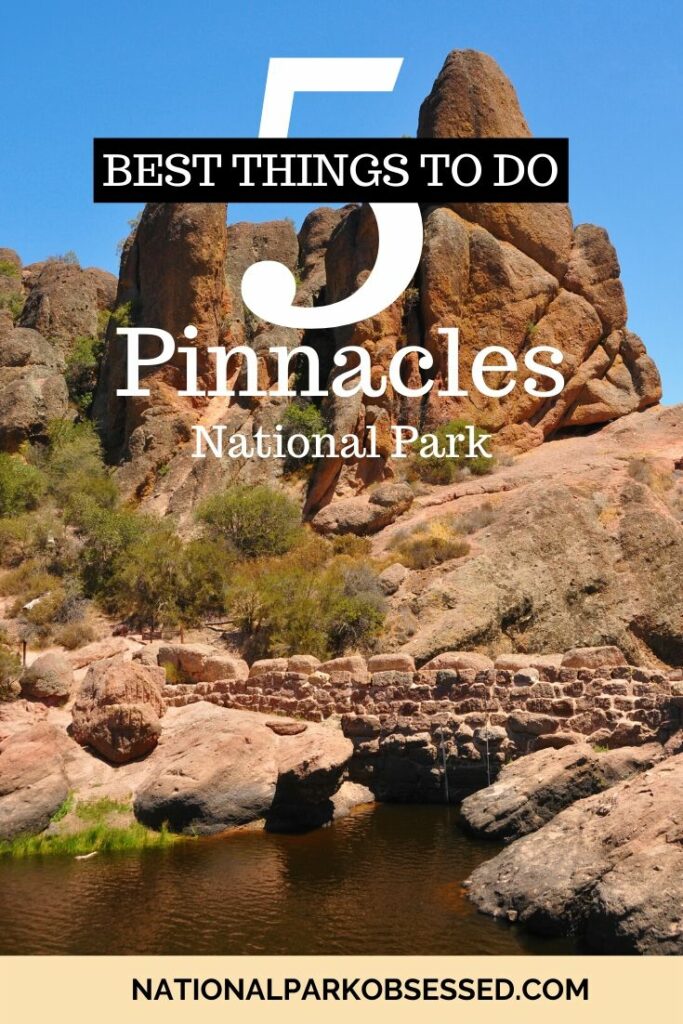
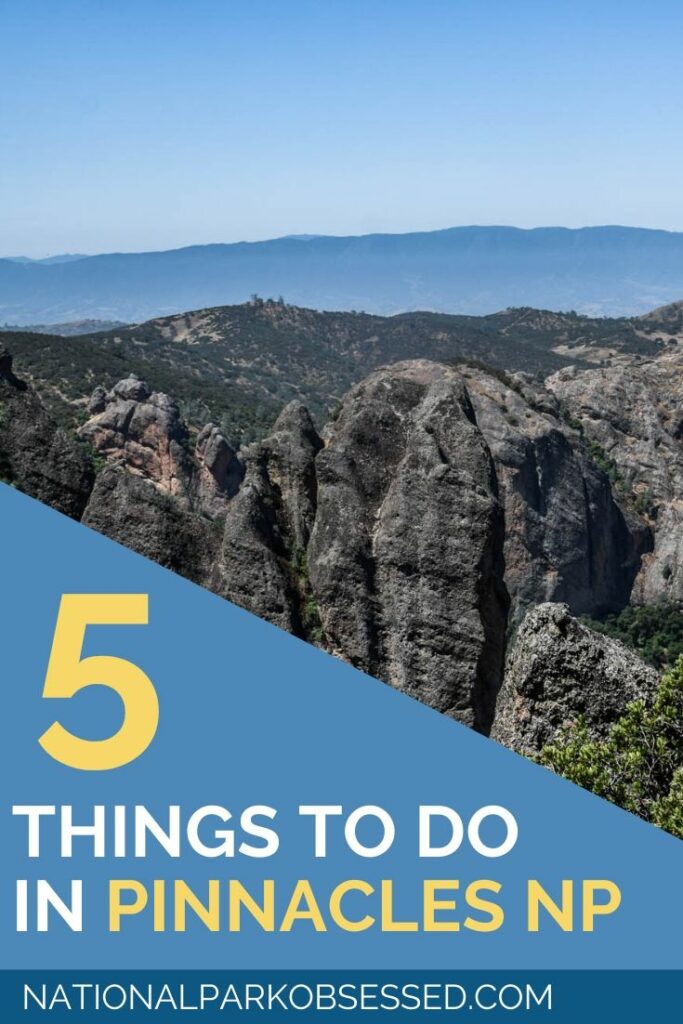
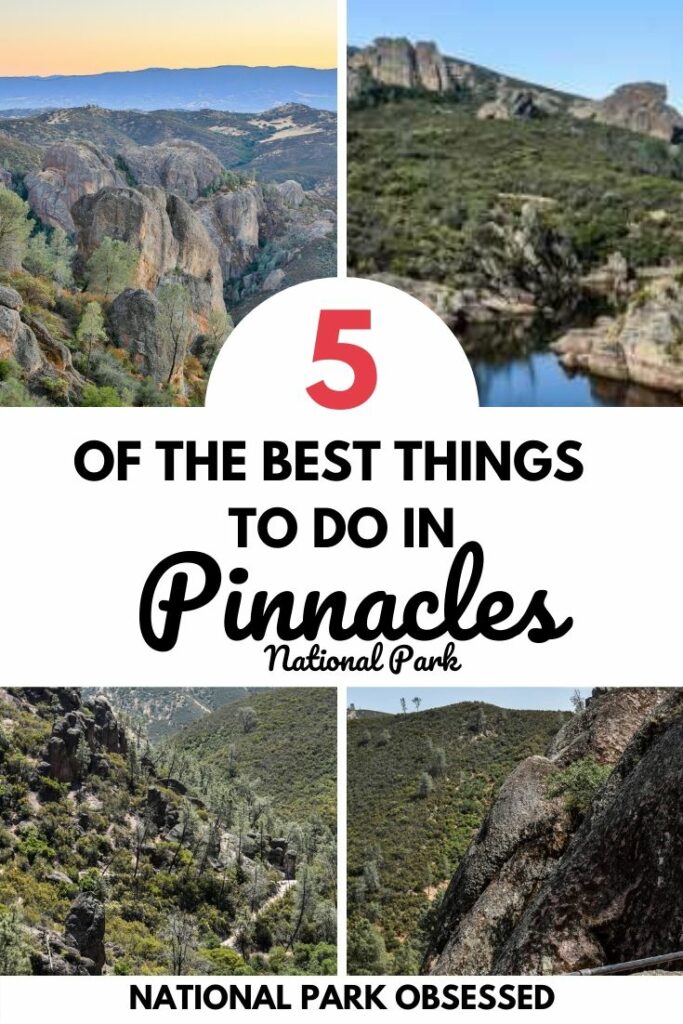
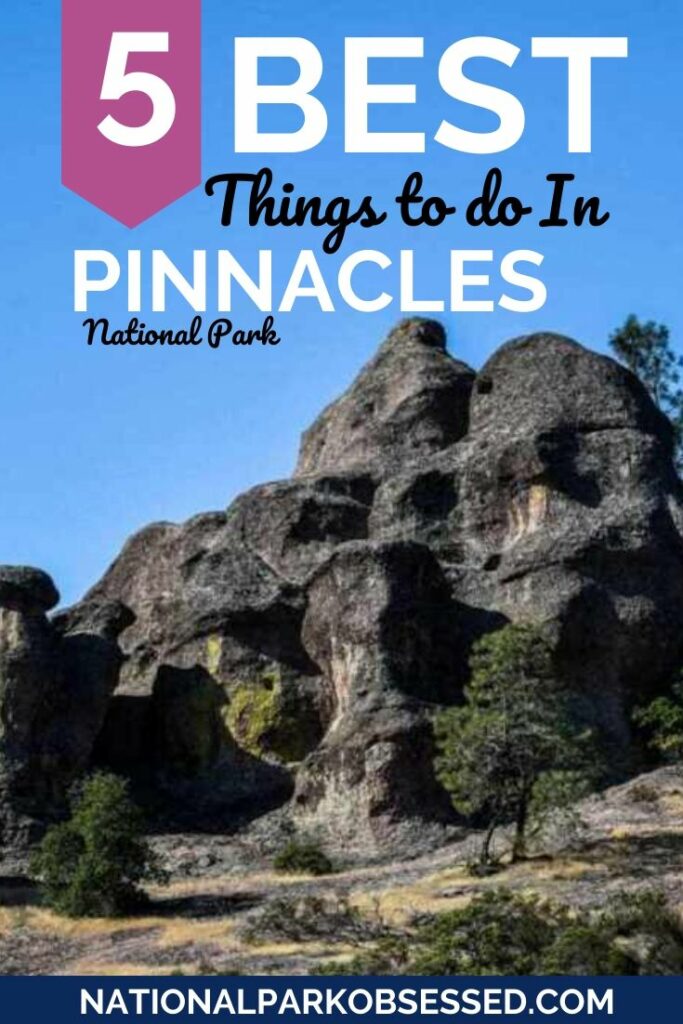
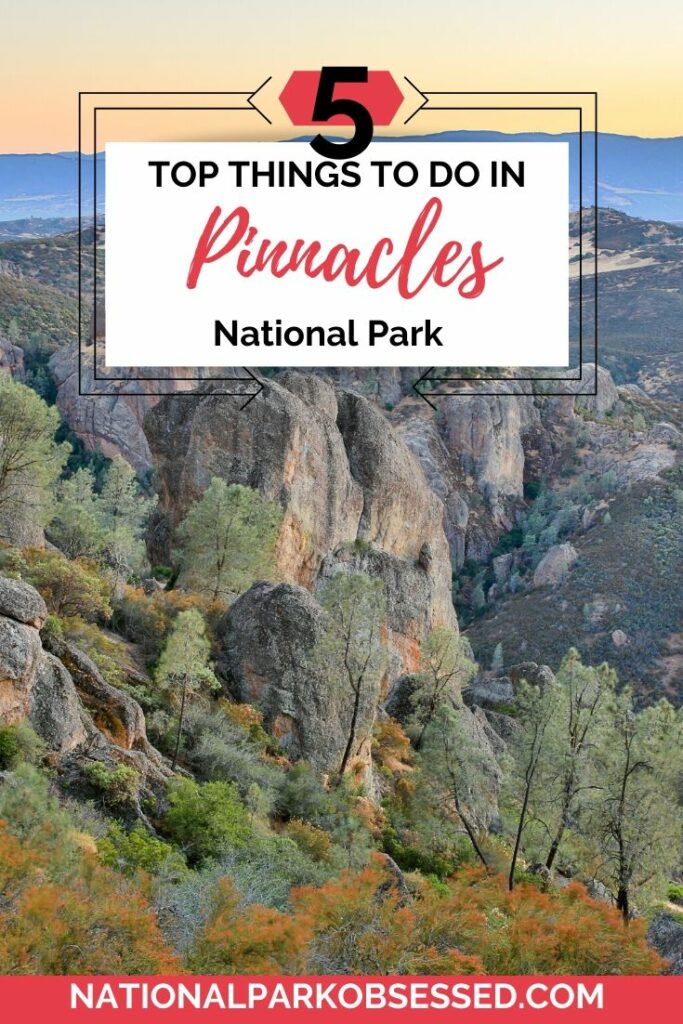

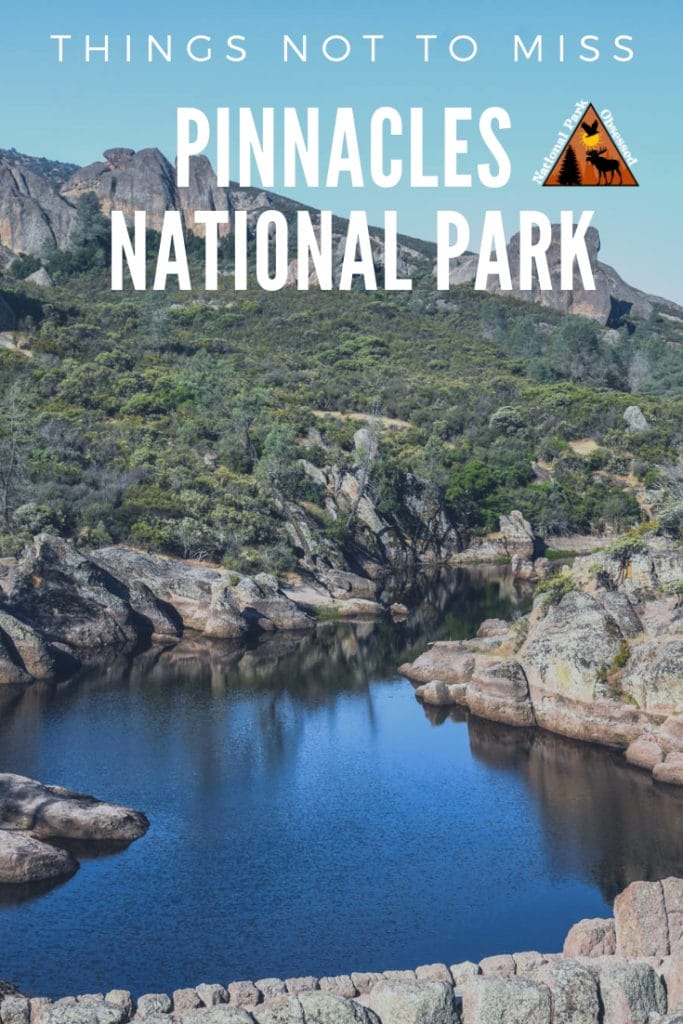
Planning an amazing trip to Pinnacles National Park? Looking to experience all the exciting adventures in Pinnacles. Pinnacles National Park is the smallest national park in California. It is the youngest park as well. Its age and size doesn’t mean you should overlook Pinnacles NP. Pinnacles a mountainous park is contains the remnants of an extinct volcano. All that is left of this volcano is towering domed rock formations. They give Pinnacles its name. Pinnacles is a unique mix of towering rock formations with unique wildlife. Get out your hiking boots, sunscreen, and binoculars; here are my top five things not to miss on your first visit to Pinnacles National Park.
This post was originally published on 21 January 2019. It was updated on 04 July 2019, 07 December 2019, and 16 June 2020.
Best of Pinnacles National Park in a Nutshell
- Best Things to Do: High Peaks Trail, California Condor Watching
- Best Time to Visit: The best time to visit is spring (the most popular time to visit) or fall. The temperatures are cooler, and the park facilities will be open, including the shuttle.
- Entrance Fees: The entrance fee is $30 per vehicle or free with the America the Beautiful National Park Pass. This $80 pass is valid for 12 months and includes over 2000+ federal lands for free.
- Make sure you have a National Park Passport: Here is my favorite National Park Passport.
- How to Get There: The only way to reach the park is to drive. You will need a vehicle to reach the park. Browse for deals on rental cars at RentalCars.com. Or rent an RV or campervan with RVshare or Outdoorsy.
- Best Airports: The closest airports are located in San Jose (SJC), Fresno (FAT), Oakland (OAK), or San Francisco (SFO). Use Skyscanner to get the best prices on your flights.
- How to Get Around: The park has an east side and a west side. Both sides have access to the most popular Pinnacles hiking trails. There is NO road connecting the two sides. There is limited parking. On the east side, there is a shuttle from the visitor center to the Bear Gulch trailhead.
- Where to Stay: The best place (and only) near the park is the Motel 6 Soledad. It is located on the west side of the park. If you are camping, there is a campground with RV & Tent sites along with small cabins on the east side of the park with a pool.
- Don’t forget travel insurance: I get my travel insurance through World Nomads.
- Nearby National Parks: Yosemite, Kings Canyon, Sequoia, Channel Islands, Lassen Volcanic, Death Valley, Joshua Tree, Redwoods
New to National Park Trip Planning? Check out the Ultimate National Park Planning Bundle to help guide you through planning a trip to the National Parks.

This post may contain affiliate links, meaning if you book or buy something through one of these links, I may earn a small commission at no extra cost to you! Read the full disclosure policy here
Things to Know before you go Pinnacles National Park
- Carry enough water. Plan on at least 1 liter of water per hour of hiking.
- The best times to visit are between October – May. Temperatures in the park can be extreme during the summer. The best weather is from October to May.
- There are two park entrances – East and West. They are NOT connected via a road. It is an hour drive from one entrance to the other. I repeat, there is NOT A ROAD connecting the east side of the park with the west side of the park.
- Many of the popular trails such as Balconies and High Peak can be hiked starting at either entrance. Most of the popular trails connect into other trails to create a range of loops for any skill level or length.
- Pinnacles only has one campground. It is on the east side of the park.
- Parking is very limited in the park. During the weekends and on holidays, the lots will fill by 10 am.
- A weekend and holiday shuttle is offered on the East side of the park between the East Pinnacles Visitor Center and Bear Gulch. The shuttle is very busy between 10 am and 3 pm and wait times can exceed one hour.
- Visit one of the Pinnacles National Park Visitors Centers for the latest park information.
Getting to Pinnacles National Park
The closest major airport to Pinnacles National Park is the San Jose International Airport (SJC). It is located about 1.5 hours away from the east park entrance. The next closest major airport is the San Francisco International Airport (SFO). SFO is about 2 hours away.
Estimated Drive time to Pinnacles National Park (East Entrance)
- San Jose California – 1.5 hours
- San Francisco, California – 2 hours
- Sacramento, California – 3 hours
- Los Angeles, California – 4.5 hours
- Las Vegas, Nevada – 7.25 hours
- Boise, Idaho – 7.75 hours
There is no public transportation to Pinnacles National Parks.
A shuttle is offered from the east park entrance on weekends and holidays. The shuttle runs from East Pinnacles Visitor Center and Bear Gulch
Estimated Drive time to Pinnacles National Park from nearby National Parks
- Yosemite National Park – 3.25 hours
- Kings Canyon National Park – 3.5 hours
- Sequoia National Park – 3.75 hours
- Channel Islands National Park – 4 hours
- Lassen Volcanic National Park – 5.5 hours
- Death Valley National Park – 6 hours
- Joshua Tree National Park – 6.5 hours
- Redwoods National Park – 7.5 hours
- Crater Lake National Park – 8 hours
Where to Stay in Pinnacles National Park
Pinnacles National Park has limited options for places to stay. There is ONE campground on the east side of the park. It does accept reservations. Hotel options are extremely limited outside either entrance
Hotels near the West Entrance to Pinnacles National Park
- Soledad Motel 8: The closest hotel to a Pinnacles National Park Entrance. Small standard motel. Read the reviews on TripAdvisor or Book Now
What to pack for a visit to Pinnacles National Park?
- America the Beautiful National Parks Pass: Pinnacles National Park costs $30 for a 7-day pass. If you intend to visit more than 3 National Park Services sites in a year, the America the Beautiful Pass will more than pay for itself.
- National Park Passport – The National Park Passport Book is the cheapest and best souvenir of your national park adventures. This book makes it easy to collect the National Park Cancellation Stamps. The cancellation stamps have the date of your visit and make it easy to track when you visited each national park service unit.
- Refillable Water Bottles – Do your part to reduce litter in our parks by bringing a refillable water bottle with you. A reusable and refillable water bottle can save you a lot of money and really help the environment. Here are my favorite water bottles
- Hydration Bladder – If you are hiking longer distances, a hydration bladder is the best way to hike with significant quantities of water. It is a rare hike when I don’t bring a full bladder with me.
- Snacks – There are limited services in the park. So pick up all your snacks before you go. Pack a couple of different options so you are prepared for any craving.
- Fruit: Pick hard fruits such as apples or pears. These hold-up in the heat and in packs without getting squished to mush. Another option is freeze-dried fruit. Freeze-dried strawberries are the BOMB. They are crunchy, sweet and the best part is they are lightweight and yummy. These are my new favorite trail snack.
- Vegetables: Cucumbers and carrots hold up well during hiking and in a hot car.
- Granola Bars: Take your favorite non-coated in chocolate granola bars. Anything coated in chocolate will melt and be a sticky mess. My favorite is a selection of Cliff Bars. They are great even when squished.
- Sunscreen – You don’t want to get burned on your visit.
- Lip balm – Your lips need just as much sun protection as your skin does.
- Sunglasses – Similar to sunscreen, you need a good pair of polarized sunglasses to protect your eyes from the glare of the sun.
- Hat – Hats are another sun protection device. A hat can keep the sun off your face and neck and help minimize the need for sunscreen while on the trail.
- First aid kit – As with any outdoor adventure, accidents happen. It is better to be prepared and have a compact first-aid kit ready to help with any accidents.
- Headlamp – Always keep a headlamp handy. You never know when you might want it. It can be used for midnight bathroom runs to sunrise/sunset hikes. A good headlamp makes it easy to operate in the dark.
- Shoes – Shoes are probably the most important piece of gear to any hiker. Hiking shoes should be seen as an investment. On the trail, your feet are your transportation and a solid pair of hiking shoes help support your feet and can prevent injury.
- Hiking Day Pack – A good day pack is the best way to transport all your gear when hiking. I highly recommend getting a backpack that is designed for outdoor use. These packs come with handy pockets and straps. My 40 L day pack has a pocket for my water bladder and a clip to hold the water line in place.
- National Park Obsessed Shirt – Share your love of the National Parks and support National Park Obsessed with a National Park Obsessed T-Shirt.
If you are new to visiting the National Parks, check out our National Park Essentials Guide to get you started.
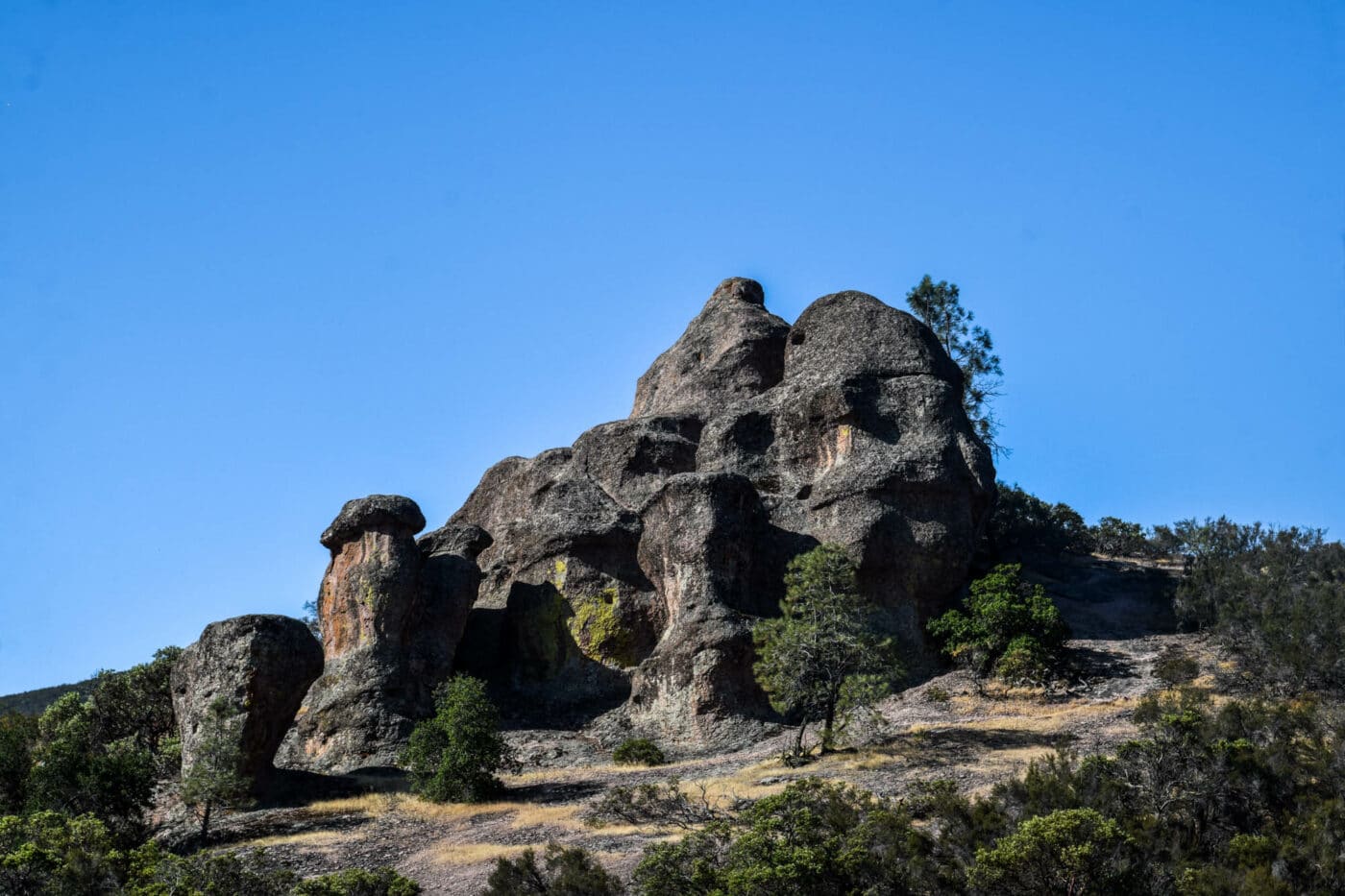
5 Things to do in Pinnacles National Park
Visit Bear Gulch Reservoir
Hike up to Bear Gulch Reservoir via Moses Springs Trail is a 0.9-mile one-way trail. The trail gains 377 feet of elevation. As you hike, you will find two trail junctions. The first junction is with Rim/High Peaks Trails. The second junction is with Bear Gulch Trail. Both of these trails can be used to form a loop with Moses Springs Trail. Just beyond the split with Bear Gulch along Moses Spring Trail is Moses Spring.
If making this trail a loop, I would hike up Moses Springs Trail then take the split with Bear Gulch Cave Trail to the Monolith and Bear Gulch Reservoir. I would then hike down the Moses Spring Trail. I would stop and enjoy Moses Spring then back to the parking lot.
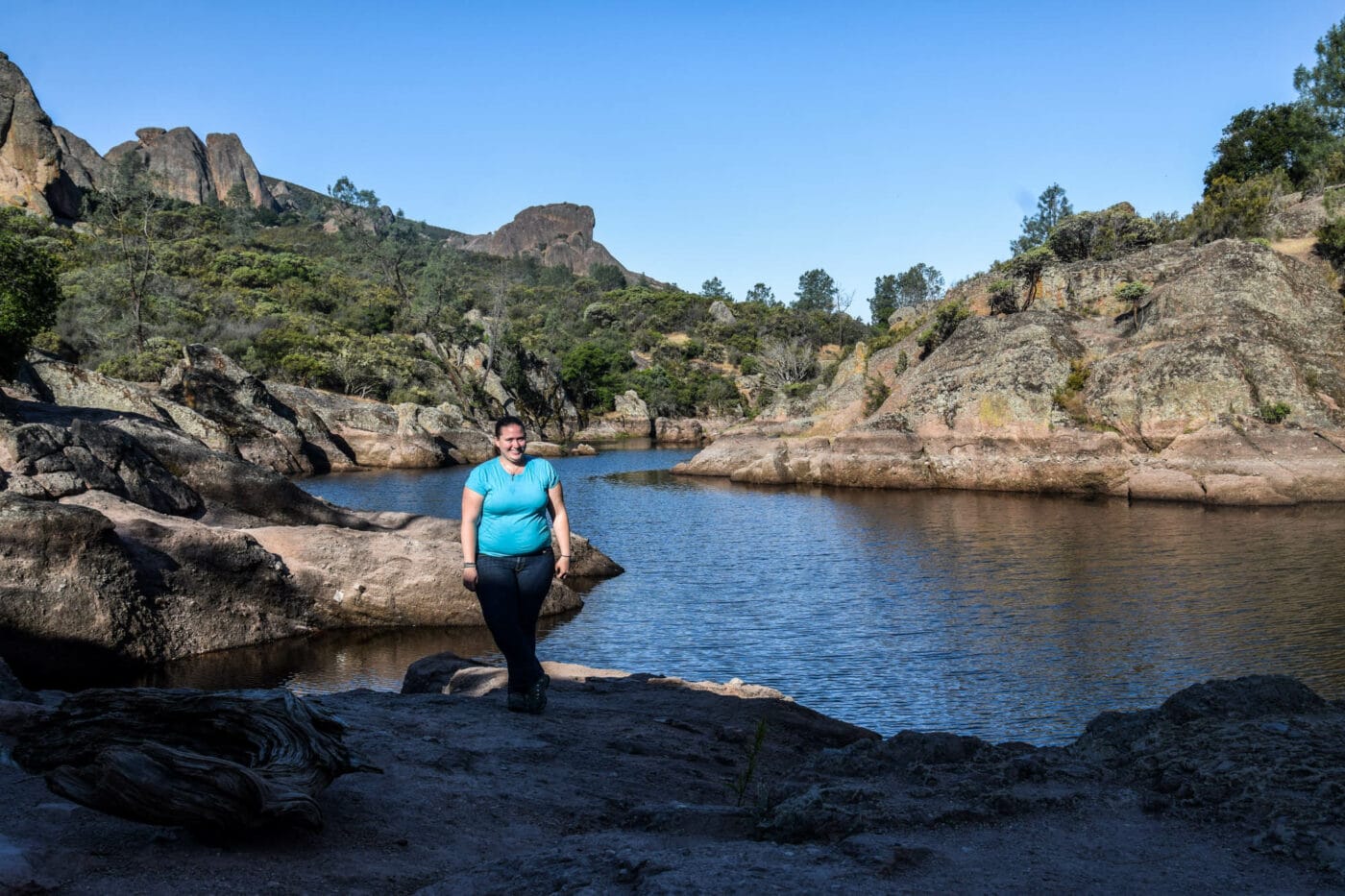
Explore a Talus Cave
A Talus Cave is a unique cave formation. These caves are narrow canyons that are filled in with boulders from the cliffs from above. This process is has been ongoing since the last ice age. The boulders that make the caves roofs range from small pebbles to thousands of ton boulders. Pinnacles National Park has two areas of Talus Caves. One is the Bear Gulch Cave and the Balconies Cave. Please note that these caves can be closed to protect Townsend’s big-eared bats or for safety regions. Please do your part and obey all cave closures.
** If you are traveling from east of the Mississippi and have been to any caves please avoid not wearing or using any of the same equipment. We are trying to limit the spread of White-nose Syndrome. If you must use some of the same equipment, please follow the recommended decontamination protocol.
Bear Gulch Cave
Bear Gulch Cave is a short 1.5-mile easy hike. The hike to the cave follows the Moses Spring Trail. before splitting off and heading thru the cave. It has about 240 ft of elevation gain. The trailhead starts at the parking lot just past Bear Gulch Day Use Area. The trail has a gradual incline and best of all has SHADE. You will hike into the narrows of the canyon and the giant rock walls will start to close in. You will know you are close to the cave when you pass the junction around the trail. Once in the cave, you are free to explore this 400 ft long trail. There are two sections of Bear Gulch trail. the Upper and Lower. If the upper Bear Gulch Cave is not open there is a side trail that leads out to the Monolith. You can either hike back the way you came or loop around on Rim Trail or Moses Spring Trail.
The Lower Cave is usually closed May to July and the Upper Cave is usually only open the months of March and October. This can vary depending on the presence of Townsend’s big-eared bats.
Pro tip – This parking is very small. As you drive thru Bear Gulch Day Use Area, take a look at the parking lot. If this lot is mostly full, park here. Odds are if Bear Gulch is filling then the lot at the end of the road is already full. You don’t want to have to head back to the Visitor Center and take the shuttle. Parking at Bear Gulch adds an extra 0.6 miles to the round trip hike.
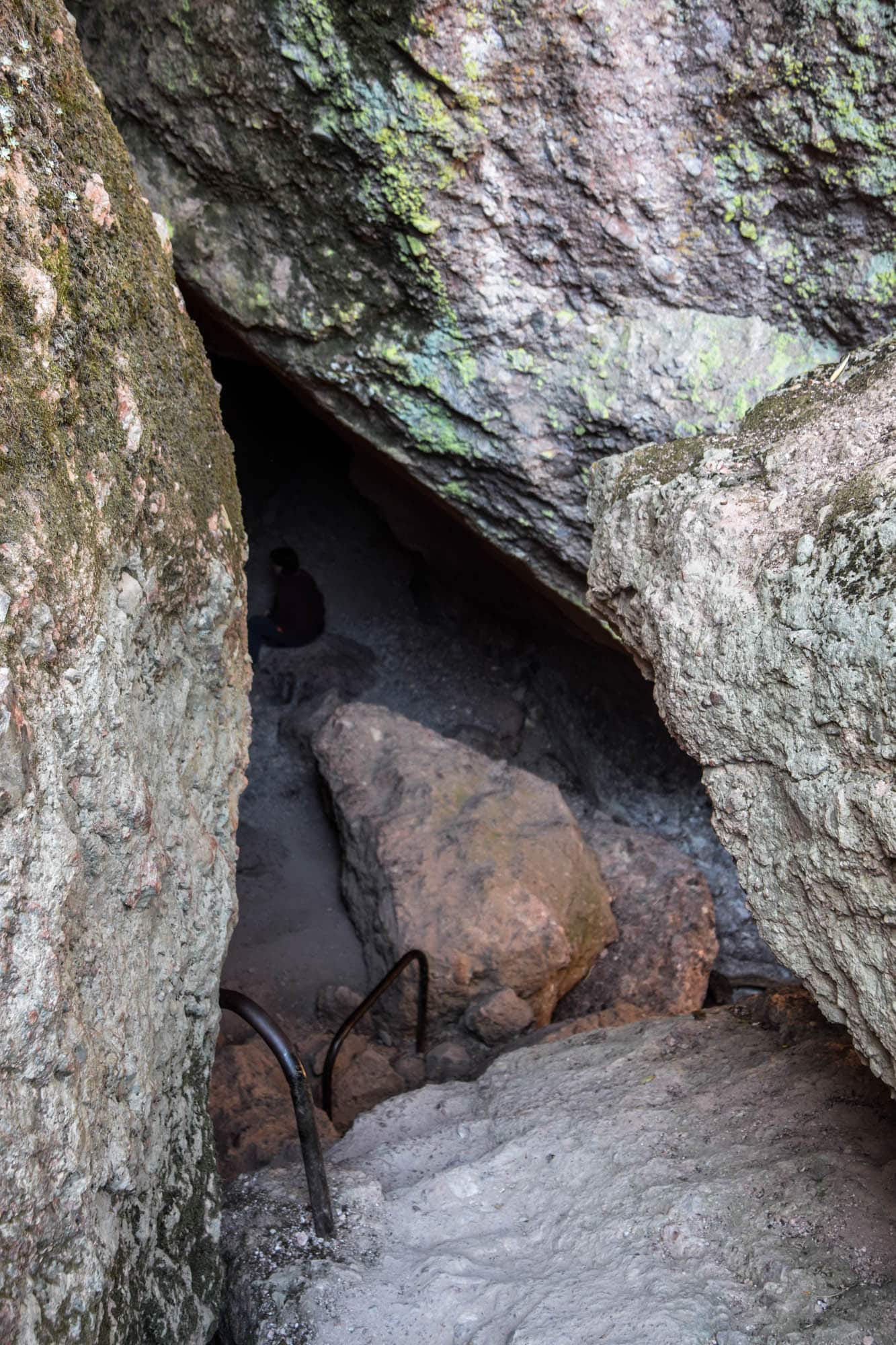
Balconies Caves
Balconies Cave is either a 1.6-mile round trip hike from the Chaparral Trailhead Parking (West Pinnacles) or 4.5 miles round trip hike from Old Pinnacles Trailhead Parking (East Pinnacles). Both trails have minimal elevation gain up to the cave. Balconies Cave is a long narrow cave. You may have to do a few rock scrambling or wade thru a bit of water. This cave is longer than Bear Gultch and a flashlight is highly recommended.
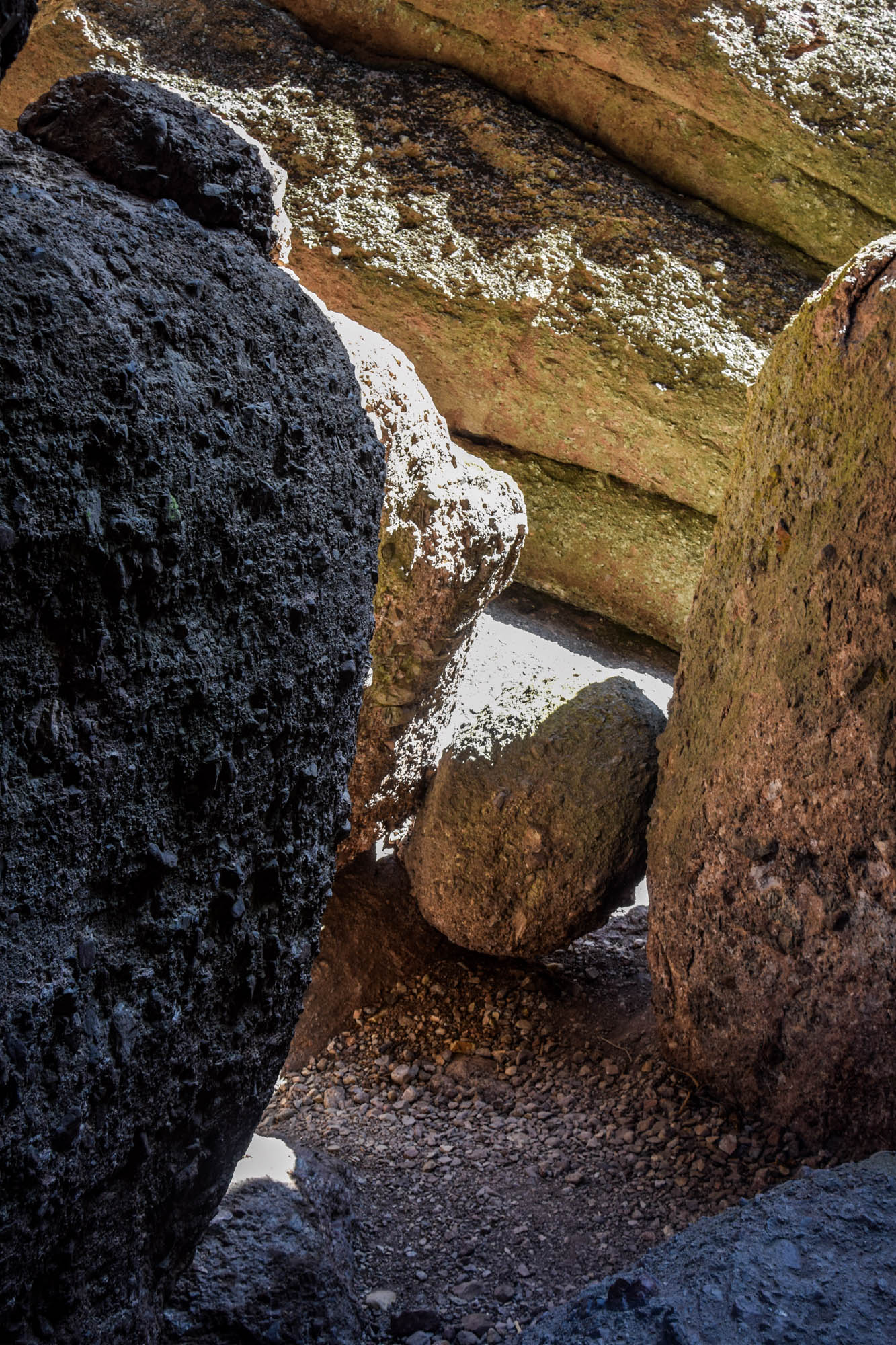
Condor Gulch Overlook
Condor Gulch Overlook is reached by hiking the Condor Gulch Trail. The Overlook is about 1 mile one way from Bear Gulch Day Use Area. The trail gains 760 ft of elevation along the way. The overlook is best hiked in the morning or late afternoon. There is little to no shade along the trail. The heat can make the trail feel like it is way longer than it really is. The overlook provides great views of Bear Gulch and the High Peaks above. Keep an eye to the sky. The region is over to over 200 species of birds.
There is another 0.7 miles past the overlook where the trail connects to the High Peaks Trail. If you have the time, it might be worth the hike to the junction but it isn’t necessary to appreciate the view.
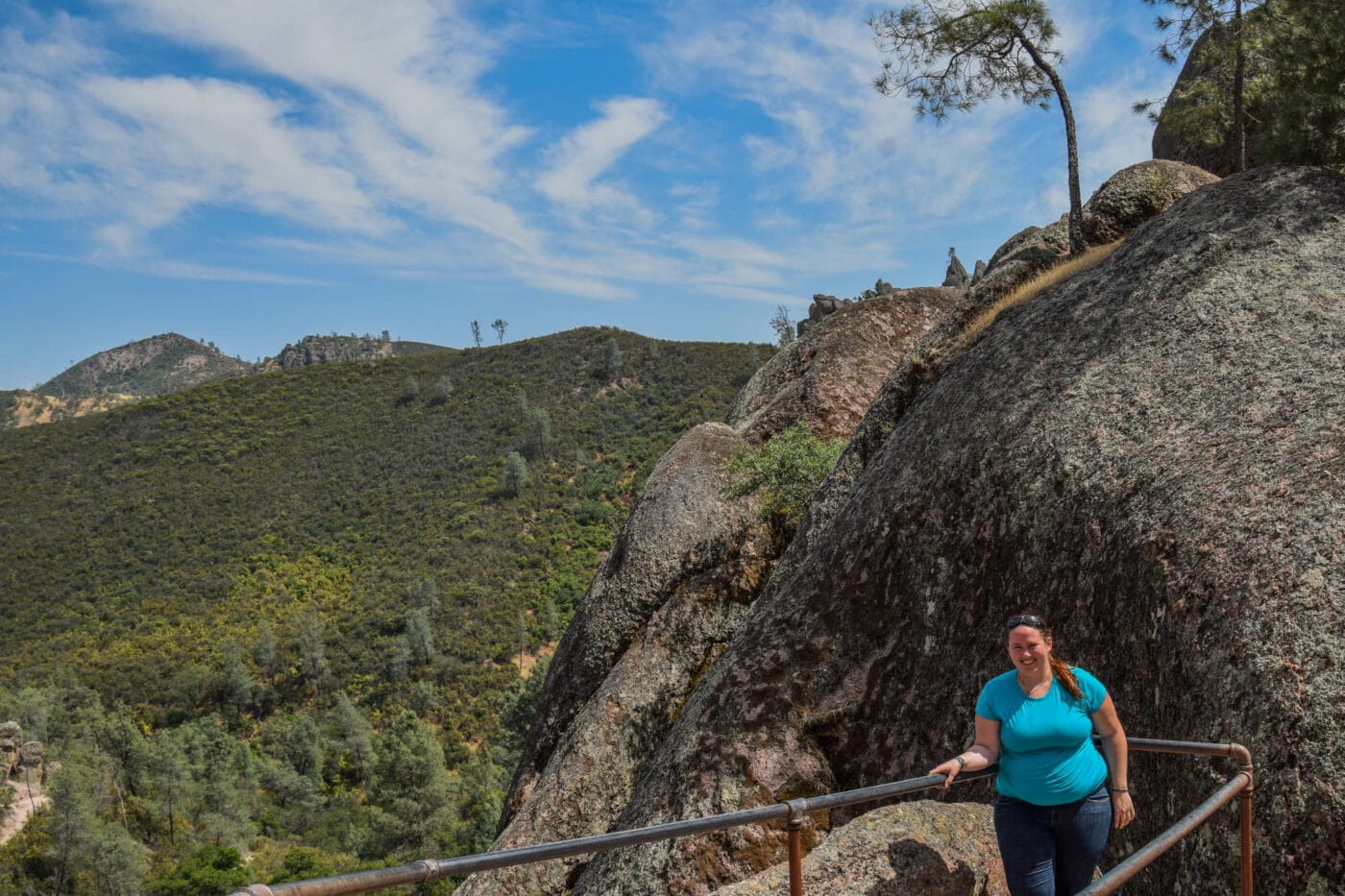
Explore the High Peaks
To really appreciate Pinnacles National Park, you need to hike up to the High Peaks. The name is a bit confusing. There is the High Peaks Trail which is a 4.5-mile trail the Rim Trail to Bench Trail. To access the trail, you have to hike to it. There are options to reach High Peaks trail from both the east and west side of the park. This area is easy to turn into a loop trail. The best section of the High Peaks is the 0.7-mile section of the High Peaks trail labeled Steep and Narrow on the park map. No matter which loop you pick, you want to hike this section. It has several ladders to climb and amazing views.
West High Peaks Loop Options – Chaparral Trailhead Parking
- Juniper Canyon Loop – 4.3 miles – 1,215 feet elevation gain – Climb up the ridge via Juniper Canyon Loop then do the Steep and Narrow section of High Peaks and return via Tunnel Trail.
East High Peaks Loop Options – Bear Gulch Day Use Parking
- Condor Gulch to High Peaks Loop – 5.3 miles – 1,3000 ft elevation gain – Head up Condor Gulch then follow High Peaks to the steep and narrow section and follow the trail back to Bear Gulch Day Use Area
- High Peaks to Bear Gulch Loop – 6.7 miles – 1,425 ft elevation gain – This trail can either start at the end of the road parking lot or Bear Gulch parking lot. The milage is the same either way. Head clockwise up the Bear Gulch trail until you hit the junction with Moses Spring Trail and High Peaks. Startup the High Peaks trail toward the steep and narrows section. Head down thru the meadows toward Bench Trail. You hike ends along the flat and shaded sections of Bench and Bear Gulch Trail.
Pro tip – On either of the east side trails, you can add a visit to Bear Gulch Cave and Bear Gulch Reservoir to your High Peaks loop. It will add 1.1 miles to your hike.
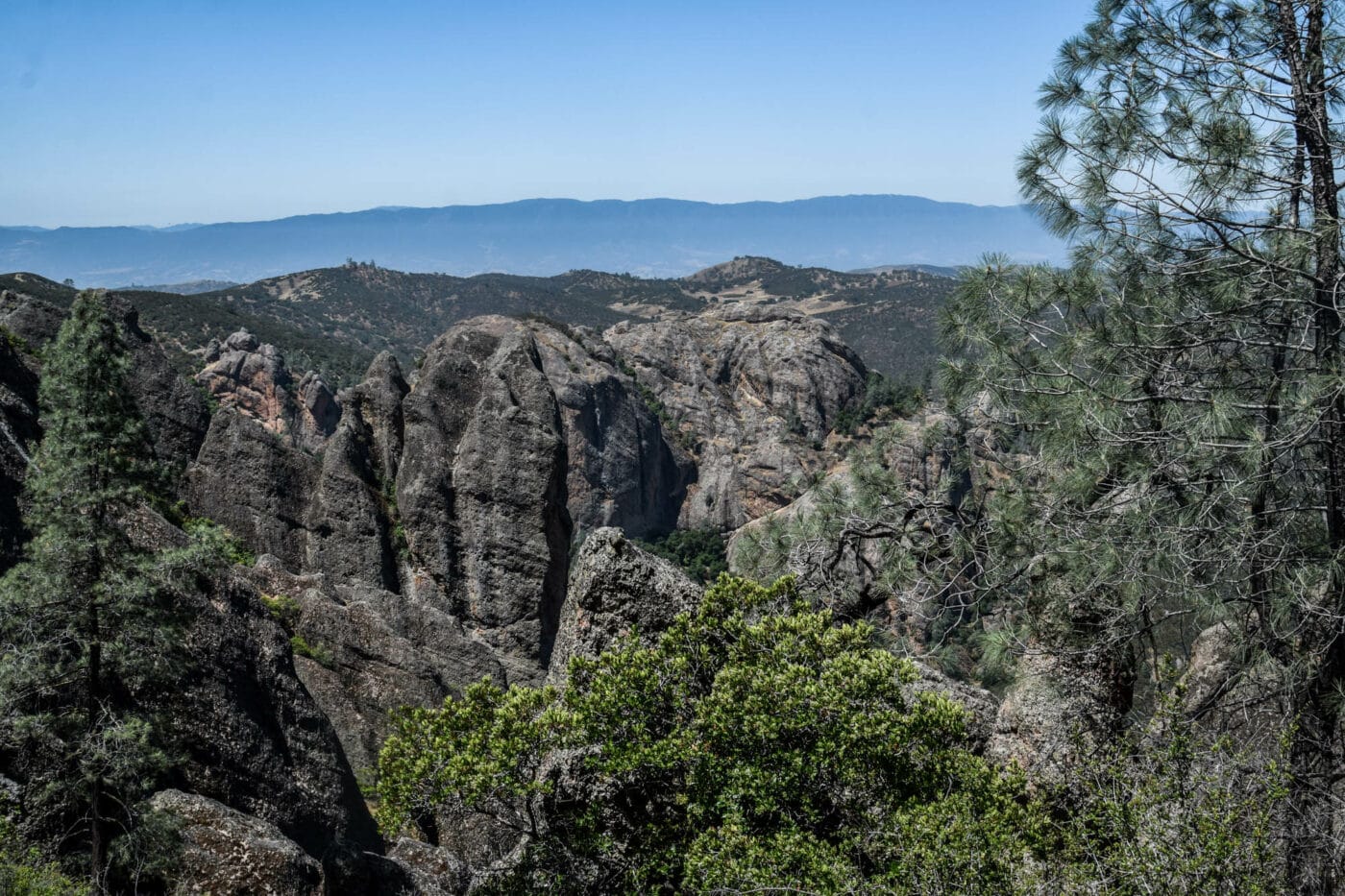
See a California Condor
The pride and joy of Pinnacles wildlife is the California Condor. The California Condor is the largest bird in North America. These birds have an 8.2 ft to 9.8 ft wingspan. By all right, these large birds should be extinct. In 1987, they were extinct in the wild. The last 22 individuals were captured and brought into the captive breeding program. In 1991, several birds were reintroduced and the population has been growing slowly. Pinnacles National Park is one of the release sites for California Condors. At 1.5 years old captive breed, Condors a carefully reintroduced into the area. They are outfitted with a wing ID tag. This ID tag traces the history of that bird back to the original 22 birds. Today there are over 400 bird flying free around Mexico, California, Arizona, and Utah. On average, Pinnacles has 27 condors in the park. That being said, they are free to come and go as they please.
As you hike along Condor Gulch and High Peaks trail, keep looking up. You will know when you see a condor. It looks like a small plane with white triangles under their wings. If you can, use your binoculars to get the ID number. The ID number will a colored piece of plastic along with a two digit number. The color and number can be used to ID the condor and trace its family tree.
If you happened to see condor peach 28, she is the first California Condor chick to fledge in Pinnacles National Park in over 100 years.
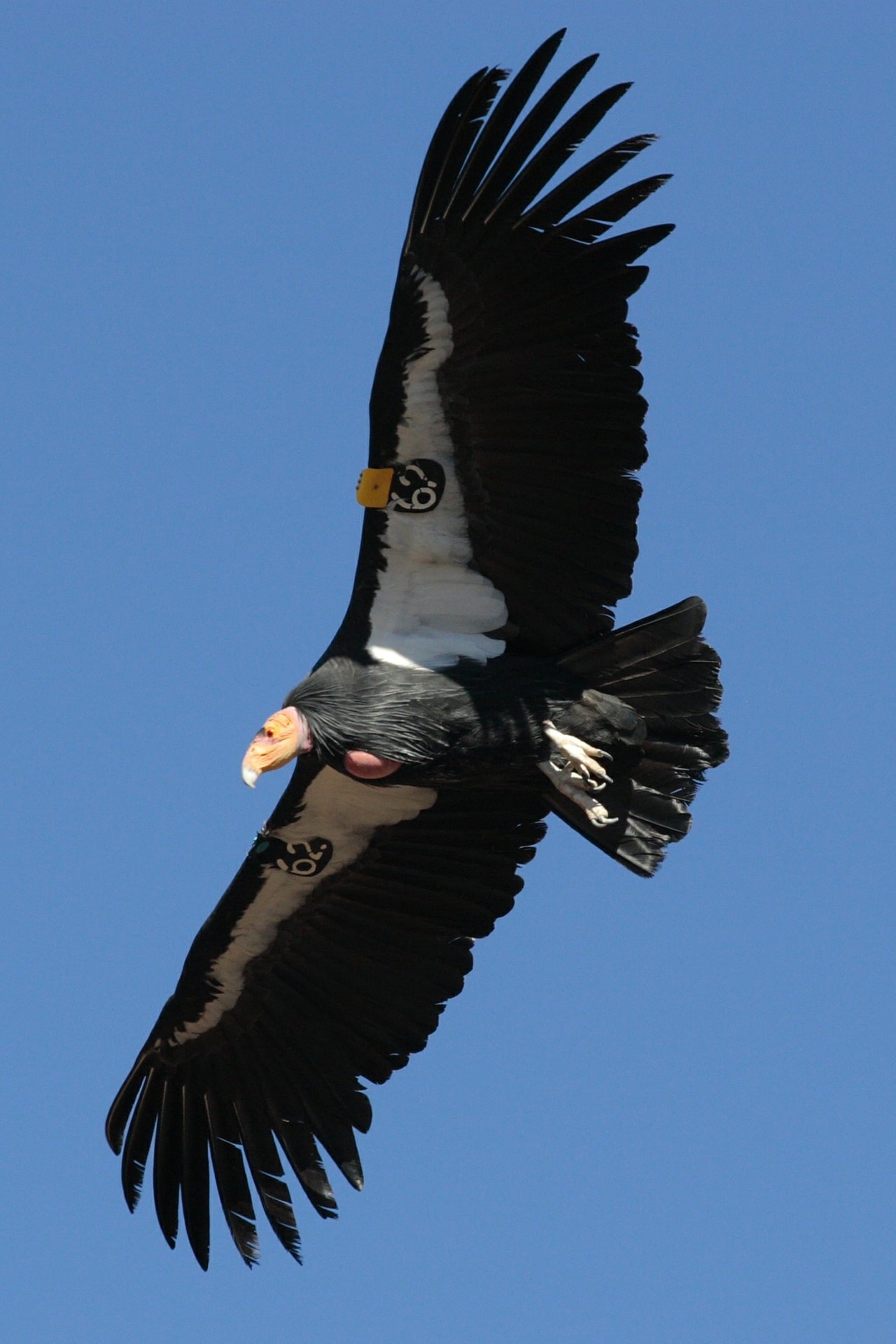
Honorable Mentions:
Rock Climbing: Pinnacles National Park is a climber’s paradise. The park has a range of climbs from solid stable pitches to soft and crumbly pitches. The park has a range of mapped routes from 5.4 to 5.10a. If you are an in-experienced climber, please use a guiding service.
Chalone Peak Trail: North Chalone Peak is the highest point in the park. The trail is 9 miles round trip with 2,040 feet of elevation change. The peak provides amazing views of the surrounding valleys A unmaintained trail leads to South Chalone Peak.
Swimming Pool: Pinnacles is one of the only national parks to have a public swimming pool in it. If you are camping in the park, be sure to use this pool. It is one of the most remote and scenic pools in the lower 48.
What do you want to do in Pinnacles National Park? Did I miss anything that should be on the Things Not to Miss on Your First Visit to Pinnacles National Park list?
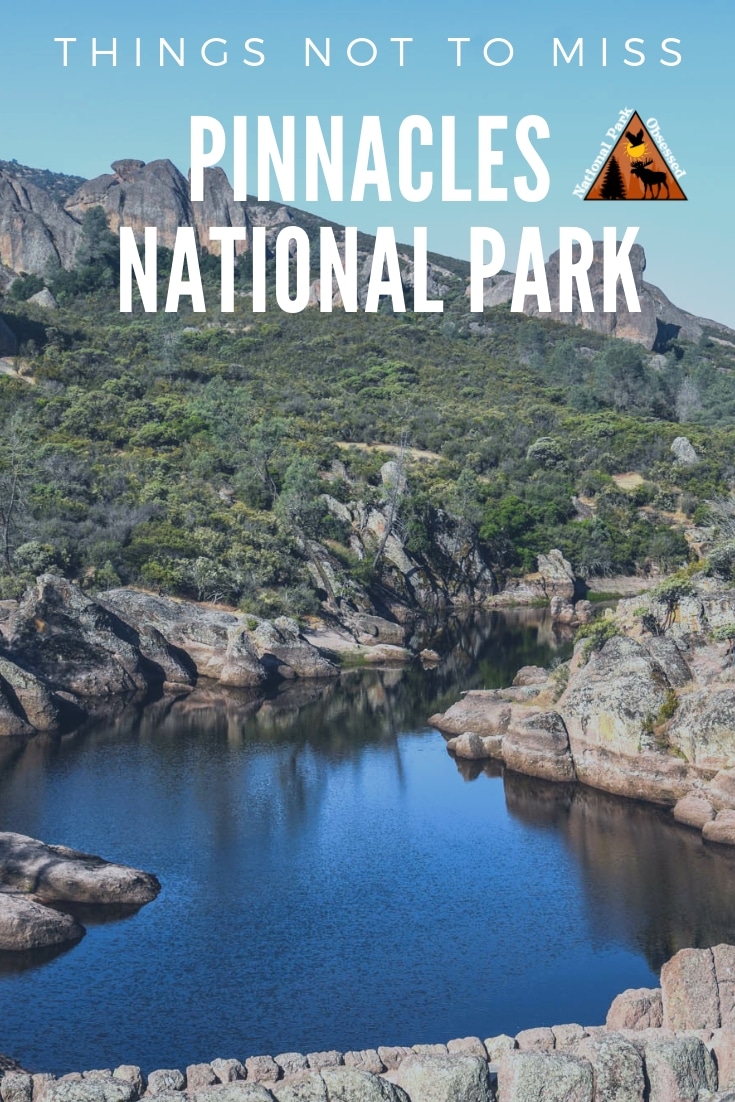
Jennifer Melroy
Hi, I'm Jennifer!
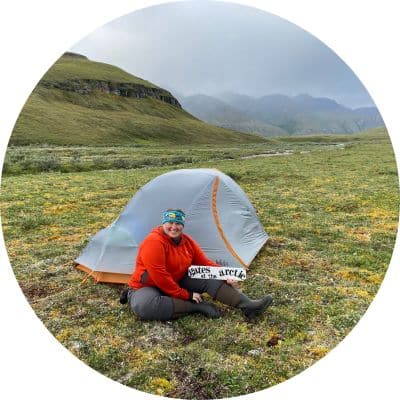
Welcome to the wonderful world of National Parks. I'm here to help you plan your NEXT amazing adventure through the United States National Parks and beyond. I want the national parks to be accessible to all.
I live in Tennessee, and when I'm home, you can find me hiking in the Smokies and the Cumberland Plateau.
58/63 National Parks
250+/423 National Park Units
Want to know more? Start Here.
Explore More
ACKNOWLEDGEMENT OF LAND
On this site, we promote travel to the United States and beyond that are the traditional lands of Indigenous and First Nations peoples.
With respect, I make a formal land acknowledgment, extending my appreciation and respect to these lands’ past and present people.
To learn more about the people who call these lands home, I invite you to explore Native Land.
DISCLAIMER
National Park Obsessed assumes no responsibility or liability for any errors or omissions in the content of this site (NationalParkObsessed.com). The information contained in this site is provided with no guarantees of completeness, accuracy, usefulness or timeliness. You are encouraged to conduct your own due diligence before acting on the information provided on this site and should not rely on the opinions expressed here.
There is an inherent risk in all outdoor recreation activities, the reader assumes all responsibility for their own personal safety.
DISCLOSURE
We are a participant in the Amazon Services LLC Associates Program, an affiliate program designed to provide a means for us to earn fees by linking to Amazon.com and affiliated sites.
Privacy Policy • About Us • Contact
Select stock photography provided depositphotos
Copyright ©2023 National Park Obsessed, LLC
Privacy Overview
Get a FREE 63 National Park Checklist
KICK START YOUR Planning
with the Ultimate National Park Planning Bundle.
This 162-page bundle includes a must see guide for each National Park along with a travel planner and the Beginners Guide to Planning a National Park Trip Planning eBook
Last Updated on 14 Sep 2022 by Jennifer Melroy



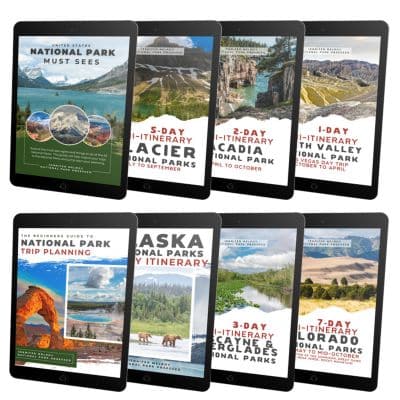
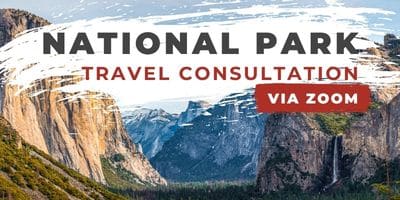

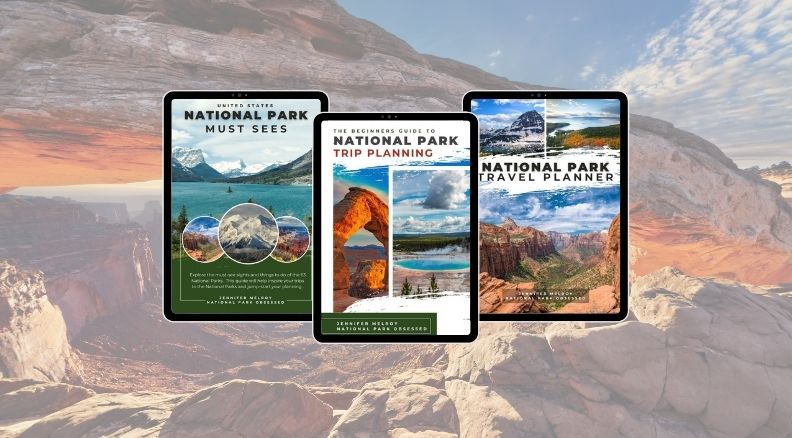
9 Comments
Ryan K Biddulph
How gorgeous, Jennifer. Look at that condor! I dig the look of the rocks too. Quite epic.
Jennifer Melroy
Pinnacles is pretty epic.
Kate
Balconies Cave was open when we were there recently in June 2019. I didn’t do it, but some of our party did and a ranger had been through it a few times already that day.
Jennifer Melroy
Thank you so much for the update on the Balconies status. I am glad to hear it’s back open.
danica
hey there. Thanks for your blog! I love national parks too. This is going to be very handy for me and the children. Thank you again for your hard work 🙂 . Yay nature!
Jennifer Melroy
Danica, I hope you have an amazing time at Pinnacles National Park. It is a surprising favorite.
Christy
Thanks so much for this post – I’m heading to Pinnacles here in a few months and I’m super excited!
Jennifer Melroy
I am glad you found this helpful. Please share your adventures on Instagram using #NationalParkObsessed
Monica
Thank you. We drive by the roads to the entrances to Pinnacles all the time. Now finally, thanks to being stuck at home, we’ll go to a pinnacles this spring. Got to figure out the motel situation though …